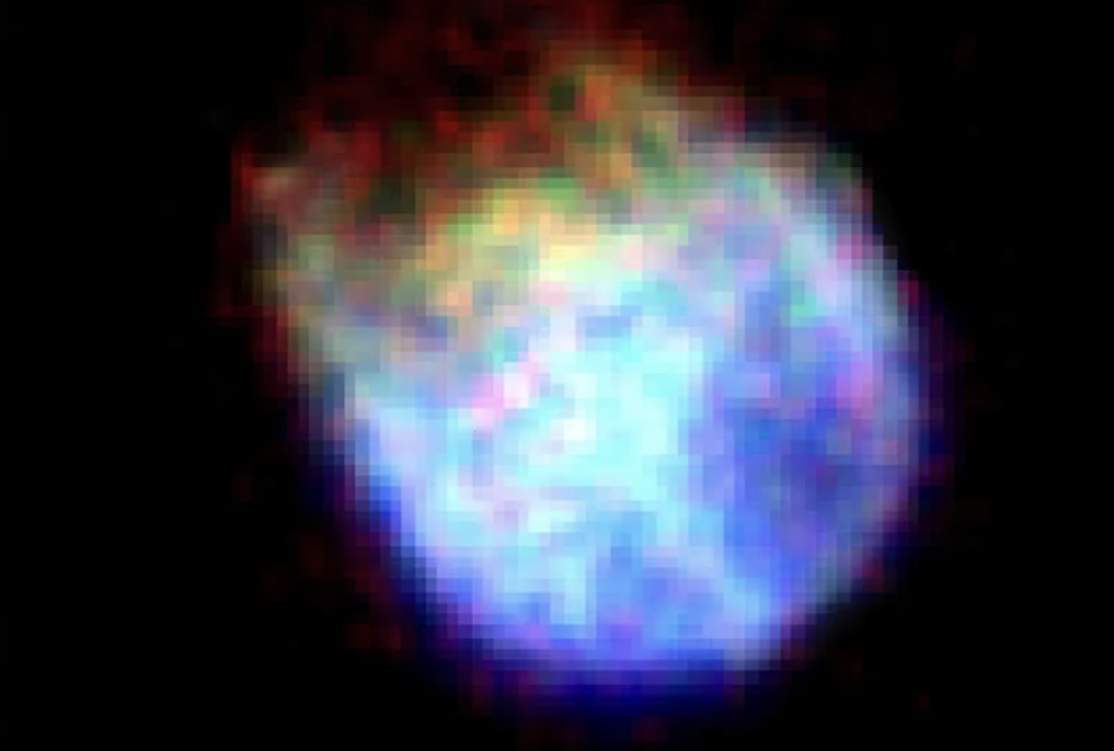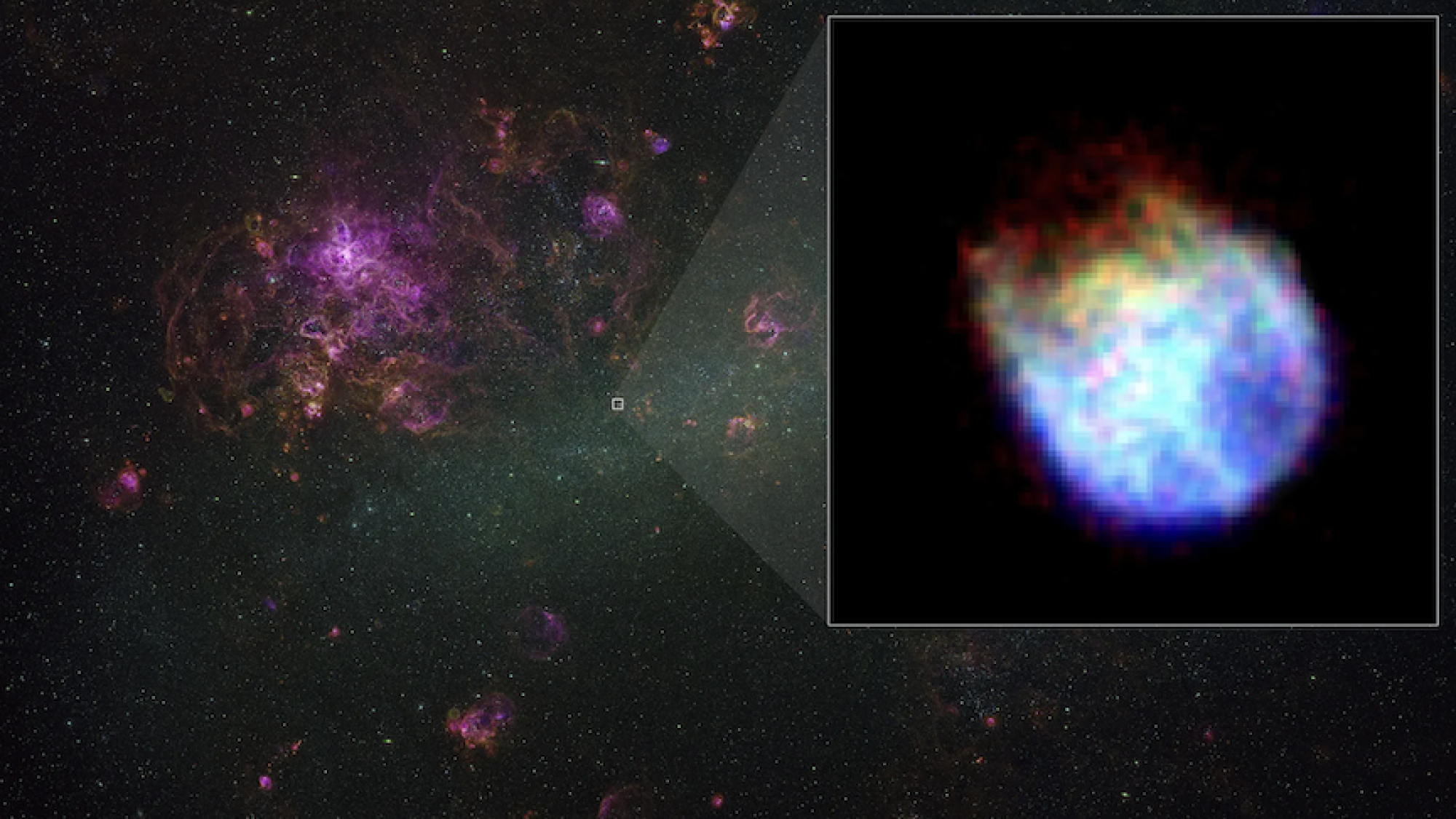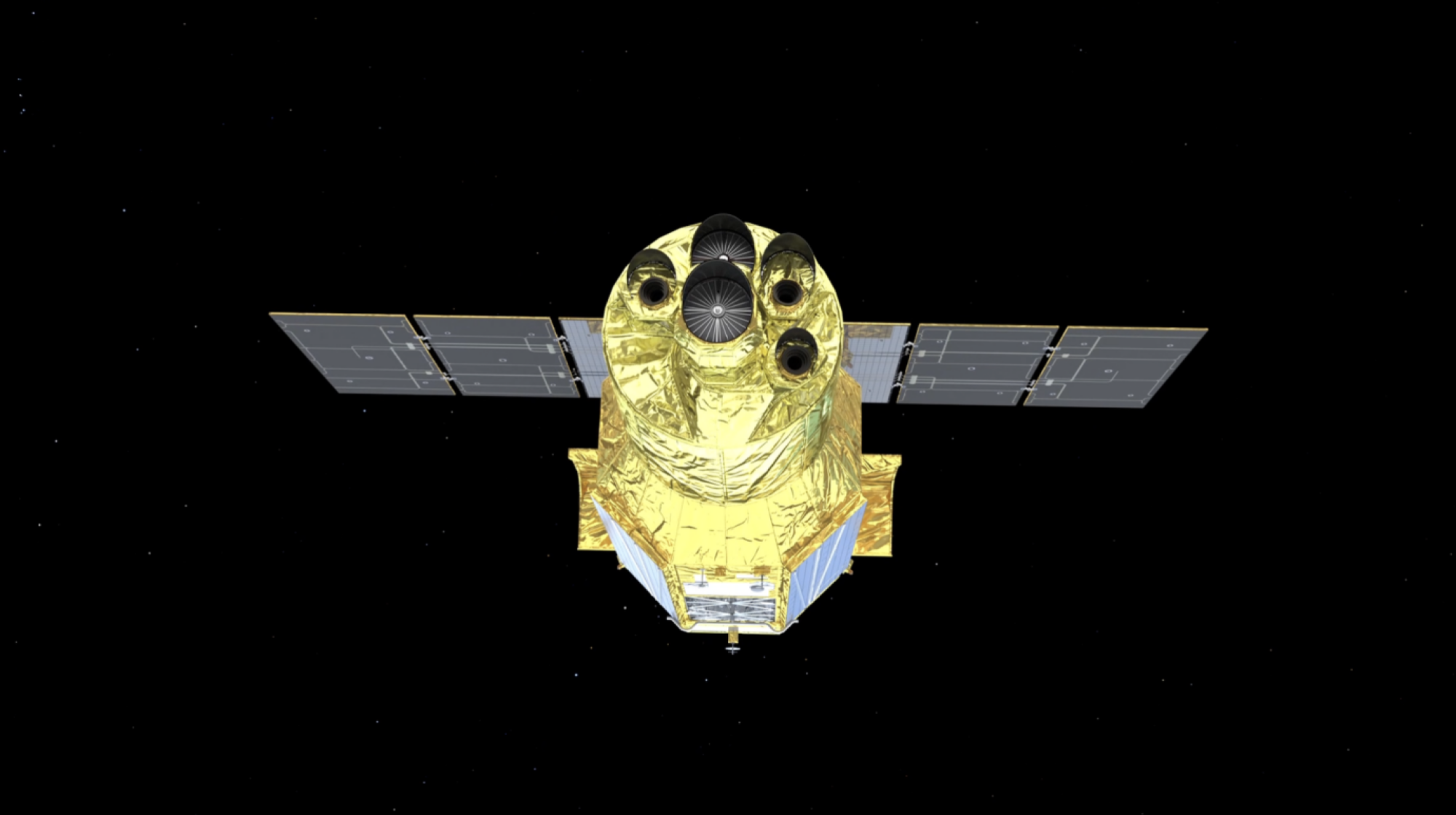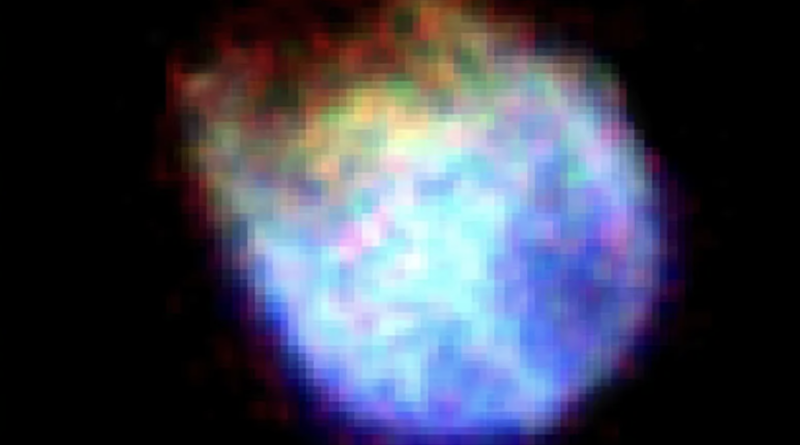NASA just spotted an exploded star blasting vital elements into space

Around 3,000 years ago, a star 15 times bigger than our sun exploded. Now, scientists are watching it blast valuable elements into space.
Astronomers have a powerful new observatory orbiting Earth, the Japan Aerospace Exploration Agency-led XRISM (X-ray Imaging and Spectroscopy Mission). In collaboration with NASA, the team just captured an unprecedented view of this exploded star, now called “supernova remnant N132D,” located some 160,000 light-years away.
Massive stars forge elements deep inside their hot, pressurized cores, and can also create elements during a violent stellar blast that occurs when they run out of fuel and collapse. In the image below, you’re seeing the wreckage of such a star enrich the cosmos with these elements. The XRISM observatory picked up evidence of iron, calcium, sulfur, silicon, and argon. (Iron, you may recall, is a vital part of our blood.)
“These elements were forged in the original star and then blasted away when it exploded as a supernova,” Brian Williams, NASA’s XRISM project scientist, said in an agency statement.
The expanding, bubble-like remnant of gas and elements is about 75 light-years across (and one light-year is around 6 trillion miles).


XRISM carries an instrument, called a spectrometer, that is invaluable for sleuthing out the composition of distant cosmic objects. The James Webb Space Telescope, for example, carries a spectrometer. Spectrometers take in light and then separate it into different colors, similar to a prism, with different colors indicating different elements. XRISM detects a type of light called x-rays, which different objects in the universe — like exploded stars and the matter swirling around black holes — emit into space.
“XRISM will provide the international science community with a new glimpse of the hidden X-ray sky,” Richard Kelley, the U.S. principal investigator for XRISM at NASA’s Goddard Space Flight Center, said in a statement. “We’ll not only see X-ray images of these sources, but also study their compositions, motions, and physical states.”
The ambitious space mission, launched in September 2023, is just beginning. It’s designed to last three years, but given the track record, it’ll likely last for a lot longer.
